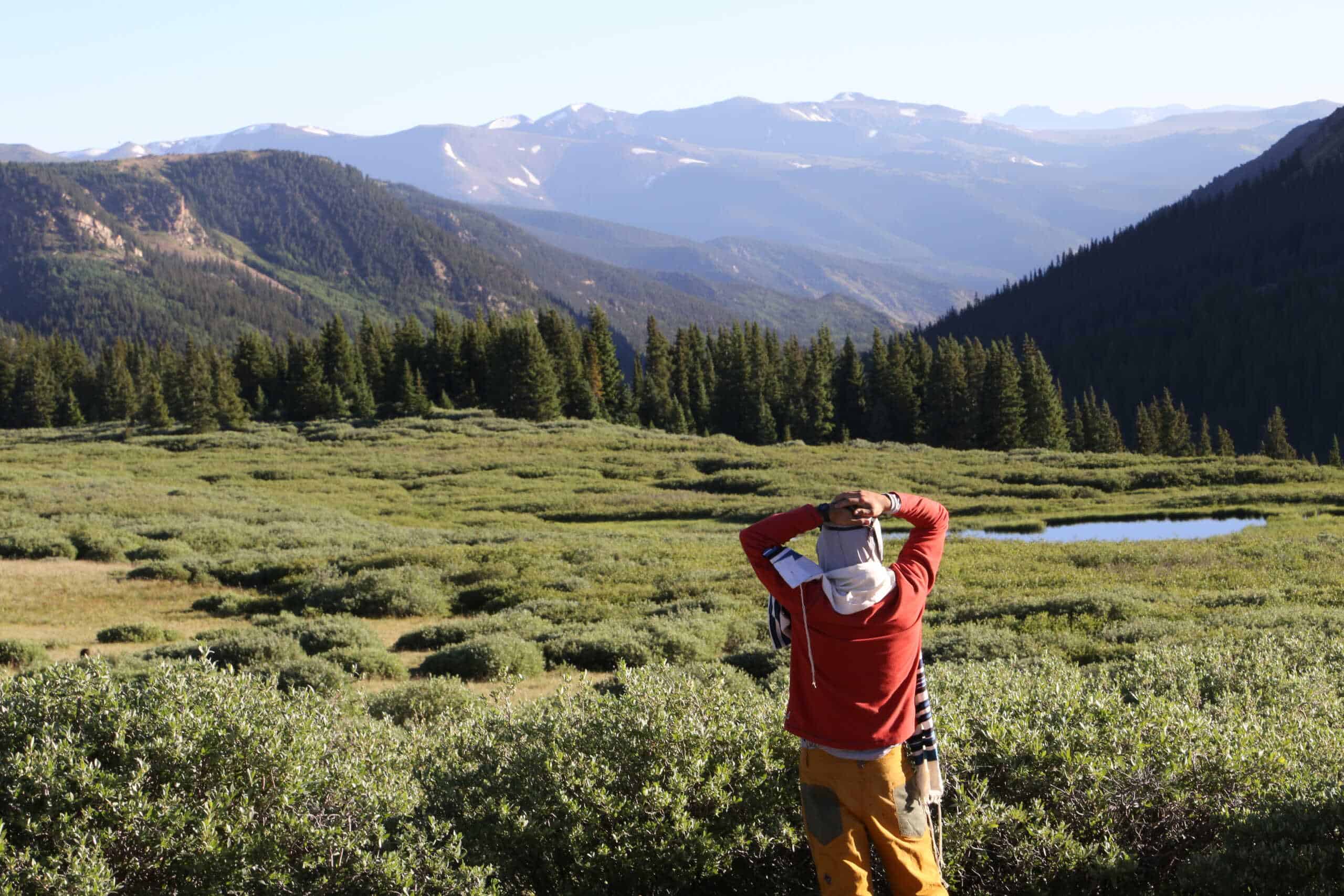By Hindy Finman
Exhausted and dirty, I boarded my flight home. As I sat down I was overcome with a sense of gratitude and happiness. This was the type of simcha, joy, that consumes so much of you it becomes part of your very soul. I had just returned from spending a week at Ramah in the Rockies, the new home for BaMidbar Wilderness Therapy. Our leadership team did a thorough walkthrough of the site, ensuring we have everything we need to begin staff training on January 7th. When Shabbat arrived, we spent the next 26 hours discussing a question that reiterates the existence of the Jewish people: what makes us, this program, Jewish?
Is our program Jewish because we light Shabbat candles? Or use a siddur, a prayer book, for Friday night services? Or maybe it was the mezuzah on the door and the kosher food on our table. While these are certainly Jewish practices, that was not the answer. And so we dug deep. We got personal. We argued. We laughed. We cried. We took solo walks to be alone with our thoughts before gathering again to dig even deeper, laugh even more, and argue a bit louder as we challenged each other’s answers.
At one point the conversation turned to prayer, and at that moment I froze. While I am a pretty open person, prayer is one of the hardest things for me to discuss.
Growing up in the Chasidic community, prayer used to be central to my daily life. I was instructed to pray twice a day while at school as well as during an evening service at home and again before bed. Unlike most people around me, I didn’t find meaning in prayer, and would usually spend the time coloring. By the time I reached high school, I hated prayer. And it wasn’t that I didn’t try to find something that would bring meaning to me. A new siddur, learning the melodies, even focusing on the words – nothing brought me that connection I saw in others. As I branched away from this community as a young adult, it was a practice I was more than happy to leave behind.
Then, about four years ago, I arrived at Ramah in the Rockies for senior staff Shabbat and everything changed. We were outside. Dirt was underfoot. Sometimes we used the prayer books, and sometimes we didn’t. There were musical instruments. We sang and sang. There were no walls, no rules. Just us and the melodies intertwining. That weekend, I cried. This was prayer. This made sense.
 Since then my relationship with prayer has changed. I recognized there are many different forms of organized prayer, and personal prayer is whatever I would like it to be. It is still complicated and I don’t have all the answers. A few years ago I decided I would wear a tallit, a prayer shawl, when participating in organized prayer. The thought behind it was that it would embrace me, creating a warm and loving space in place of all the negative feelings I had as a child and teenager. This worked. I could step into a zone and enjoy the space I occupied. Sometime later I wondered if I could also do this for moments of personal prayer. That led me to falling in love with short, mindful minutes that I could fill with a text-based prayer, a melody, a conversation, or simple silence.
Since then my relationship with prayer has changed. I recognized there are many different forms of organized prayer, and personal prayer is whatever I would like it to be. It is still complicated and I don’t have all the answers. A few years ago I decided I would wear a tallit, a prayer shawl, when participating in organized prayer. The thought behind it was that it would embrace me, creating a warm and loving space in place of all the negative feelings I had as a child and teenager. This worked. I could step into a zone and enjoy the space I occupied. Sometime later I wondered if I could also do this for moments of personal prayer. That led me to falling in love with short, mindful minutes that I could fill with a text-based prayer, a melody, a conversation, or simple silence.
Until this past Shabbat, I rarely spoke about my relationship to prayer. It felt too messy. Yet there we were, surrounded by the stillness of the midbar, the wilderness, trying to answer the questions: “What does prayer look like at BaMidbar? How do we create a safe space in Jewish prayer?” As I cried through my answer, I realized that once again the space created by this kehillah(community) had challenged me in ways both beautiful and powerful to express my fears and struggles. And I realized that we all have complex relationships with prayer. After all, we are just human.
By the end of the weekend we had not come up with a single answer to what makes BaMidbar Jewish. That is not the Jewish way, and there is no one path to Jewish observance within BaMidbar. At BaMidbar, we have created a space for others to join our kehillah (community), where they can ask questions and share struggles. We have created a space with complete kavod (respect for the human process), where students can laugh and cry and heal. We have created a space for tzmichat i’shit (personal growth) where learning and self-challenge can enhance transformation. And we have created a space for real simcha (joy), where it all comes together for each person, in their own individual way.
In short, we have created a Jewish space in the wilderness, bamidbar.

and has spent the past four summers at Ramah in the Rockies working as the
Inclusion Specialist, Yoetzet on the Camper Care team, and more recently
Animal Care Specialist. Growing up in a large Chabad family instilled in her the drive for
creating community spaces that focus on removing stigmas associated with mental health and addiction.
This inspired her to pursue a degree in Criminal Justice from Temple University,
help found the Boulder Moishe House, and to constantly seek answers to the
needs of her surrounding community. Hindy enjoys fusing her passions and hobbies
while achieving her goals, and can be found riding her bike,
listening to country music, making soups, and loving all things goats and ceramics.

